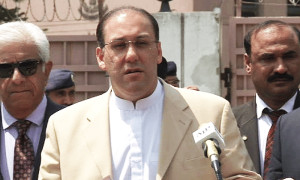Admiral
Chief Minister (5k+ posts)
Africa's Ambitious 8000 kilometers long "Great Green Wall"
Farmers in the western Sahel have achieved a remarkable success by deploying a secret weapon often overlooked in wealthier places: trees.
Not planting trees, but growing them.

Satellite view of Africa

Chris Reij, a Dutch environmental specialist at VU University Amsterdam who has worked on agricultural issues in the Sahel for thirty years, and other scientists who have studied the technique say that mixing trees and cropsa practice they have named "farmer-managed natural regeneration," or FMNR, and that is known generally as agro-forestrybrings a range of benefits. The trees' shade and bulk offer crops relief from the overwhelming heat and gusting winds. "In the past, farmers sometimes had to sow their fields three, four, or five times because wind-blown sand would cover or destroy seedlings," said Reij, a silver-haired Dutchman with the zeal of a missionary. "With trees to buffer the wind and anchor the soil, farmers need sow only once."
source: http://www.scientificamerican.com/a...t-back-drought-and-climate-change-with-trees/
China's Great Green Wall
This process of desertification is particularly acute in China, where more than 400 million people are affected by problems that include the loss of valuable agricultural land and huge sandstorms that batter Beijing.
But now the country is fighting back.
Adam Shaw heads to Doulun County, Inner Mongolia, where the authorities have turned to a low-tech approach to keep the Gobi Desert at bay.
They are building the Great Green Wall, which involves planting millions of trees to block the advancing tide.
source: http://www.bbc.com/future/story/20121211-the-green-wall-of-china
Farmers in the western Sahel have achieved a remarkable success by deploying a secret weapon often overlooked in wealthier places: trees.
Not planting trees, but growing them.

Satellite view of Africa

Chris Reij, a Dutch environmental specialist at VU University Amsterdam who has worked on agricultural issues in the Sahel for thirty years, and other scientists who have studied the technique say that mixing trees and cropsa practice they have named "farmer-managed natural regeneration," or FMNR, and that is known generally as agro-forestrybrings a range of benefits. The trees' shade and bulk offer crops relief from the overwhelming heat and gusting winds. "In the past, farmers sometimes had to sow their fields three, four, or five times because wind-blown sand would cover or destroy seedlings," said Reij, a silver-haired Dutchman with the zeal of a missionary. "With trees to buffer the wind and anchor the soil, farmers need sow only once."
source: http://www.scientificamerican.com/a...t-back-drought-and-climate-change-with-trees/
China's Great Green Wall
This process of desertification is particularly acute in China, where more than 400 million people are affected by problems that include the loss of valuable agricultural land and huge sandstorms that batter Beijing.
But now the country is fighting back.
Adam Shaw heads to Doulun County, Inner Mongolia, where the authorities have turned to a low-tech approach to keep the Gobi Desert at bay.
They are building the Great Green Wall, which involves planting millions of trees to block the advancing tide.
source: http://www.bbc.com/future/story/20121211-the-green-wall-of-china




































